..........
..home
..prints
..drawings
..sculpture
..installations
..paintings
..collaborations
..public art
..archives
..cv
..contact
all images © Florence Neal |
ÁRVORE PARA ÁGUA: Trees - Brazil
Árvore para Água (Tree to Water) is a mokuhanga print series stemming from my drawings of the bark of Brazilian trees.
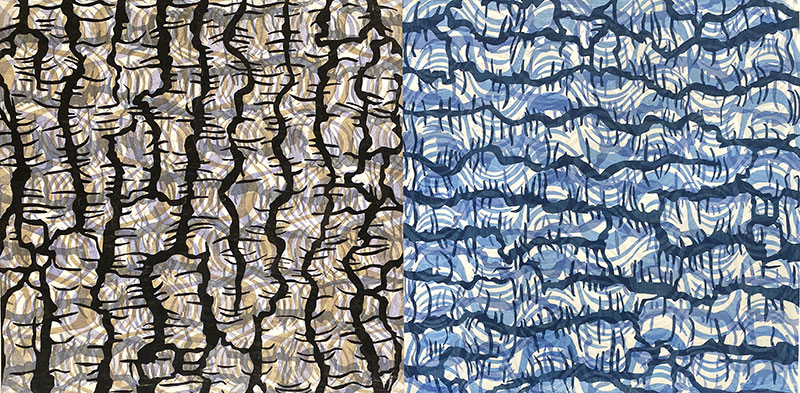
"Árvore para Água - Paraná Pinho"
mokuhanga (waterbased woodcut) on Kozoshi washi (handmade Japanese kozo paper)
Image: 15 7/8" x 31 3/4"
Edition: 7
Date: 2023
|
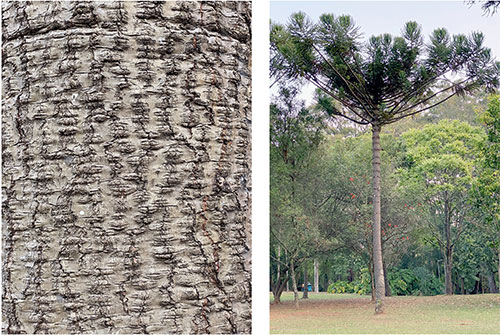
Paraná Pinho in Ibirapuera Park, São Paulo, Brazil.
Paraná pinho, also known as Brazilian pine or candelabra tree, is a species of conifer tree in the Araucaria genus that is native to Brazil. It is a critically endangered species due to deforestation and other forms of habitat destruction, as well as over-harvesting for its valuable timber. The tree is known for its distinctive candelabra shape, with branches that radiate out from the trunk in a circular pattern. The Paraná pine is an important symbol of Brazil's natural heritage and efforts are being made to conserve and protect this endangered species. The Ibirapuera Park in São Paulo is one of the places where visitors can see this iconic tree.
|
| |
|
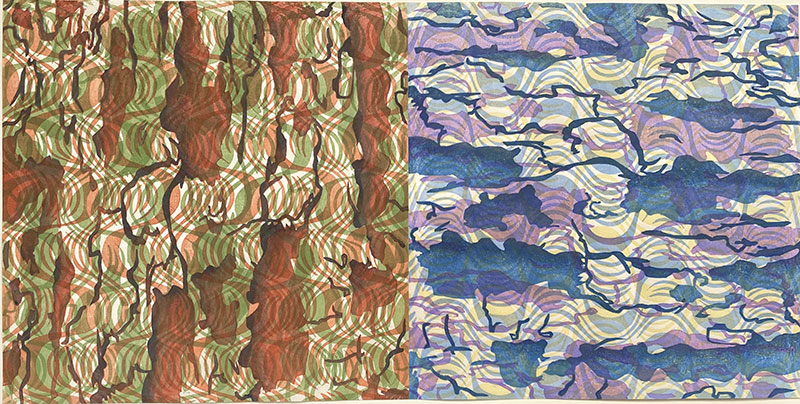
"Árvore para Água - Pau-Brasil"
mokuhanga (waterbased woodcut) on Kozoshi washi (handmade Japanese kozo paper)
Image: 15 7/8" x 31 3/4"
Edition: 7
Date: 2023
|
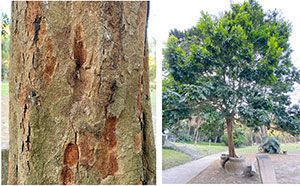
Pau-Brasil in Burle Marx Park, São Paulo, Brazil.
Pau-Brasil is the national tree of Brazil. The wood yields a historically important red dye called brazilin, which oxidizes to brazilein.The Portuguese named these trees pau-brasil, the term pau meaning wood, and brasil meaning reddish/ember-like. The reddish-orange wood was highly sought after in Europe after its discovery, particularly for the extracted dye for use in high-end fabrics. It is also known as Pernambuco-wood in the classical music world for the 18th century discovery that the properties of the wood is highly appreciated by European bow makers.
However, its popularity led to overexploitation and near extinction of the species. Efforts are being made to protect and preserve the tree, which is still threatened by illegal logging and deforestation. Today, the Pau-Brasil tree is protected by Brazilian law, and efforts are being made to conserve and restore its natural habitat.
|
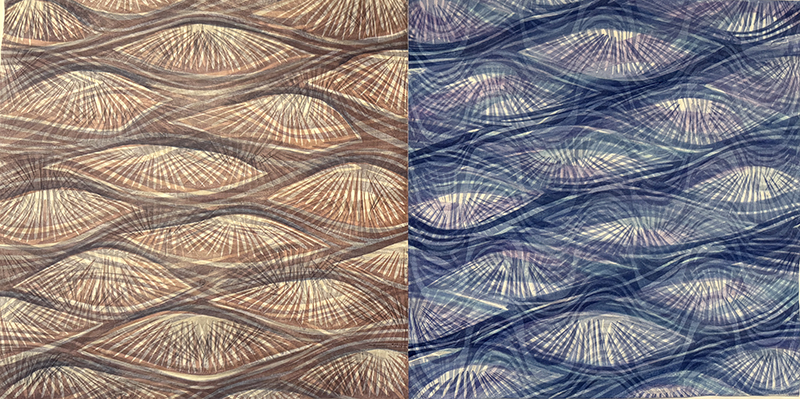
"Árvore para Água - Palmeira de Dendê"
mokuhanga (waterbased woodcut) on washi (Japanese kozo paper)
Image: 15" x 31"
Edition: 7
Date: 2024 |
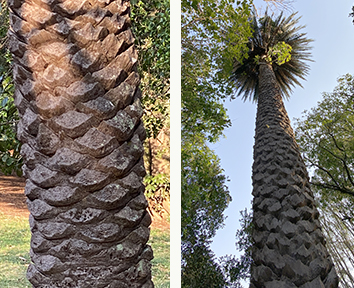
Palmeira de Dendê in Ibirapuera Park, São Paulo, Brazil.
Dendê palm trees (Elaeis guineensis), originally from West Africa, were brought to Brazil by the Portuguese during the colonial period. The trees can grow up to 100 feet in height with long, feathery fronds that can reach up to 16 feet in length. The primary product is palm oil, a bright orange-red oil extracted from the fruit's pulp and a staple in Bahian cuisine such as acarajé and moqueca. Since the oil is rich in saturated fats, moderation is recommended.
Dendê oil is deeply tied to the Afro-Brazilian culture, particularly in the religious practices of Candomblé, where it is used in rituals and offerings. The palm tree itself is also significant in African and Afro-Brazilian spiritual traditions. While the dendê palm oil is economically important, the cultivation in large plantations has raised concerns about deforestation and habitat loss. Sustainable practices are increasingly emphasized to mitigate these effects.
|
ÁRVORE PARA ÁGUA - BAHIA
Mokuhanga prints created during a 2018 Sacatar Residency on the island of Itaparica, in Bahia, Brazil.

Árvore para Água: Amendoeira, Dendê, Cajuzeira, Iroko (left to right)
mokuhanga (waterbased woodcuts) on handmade Japanese kozo paper (Mura Koban)
Image: 11" x 15"
Edition: 5 (each)
Date: 2018
|
|
|






